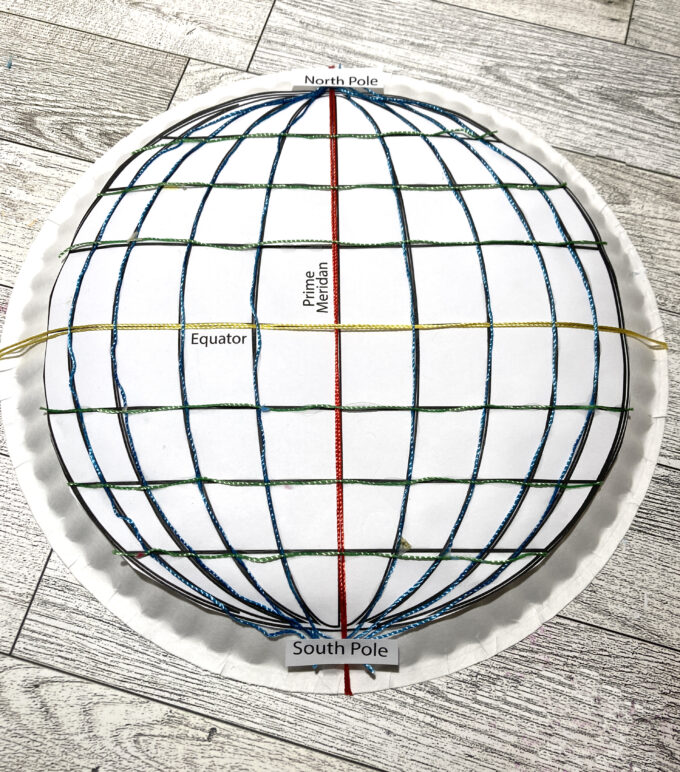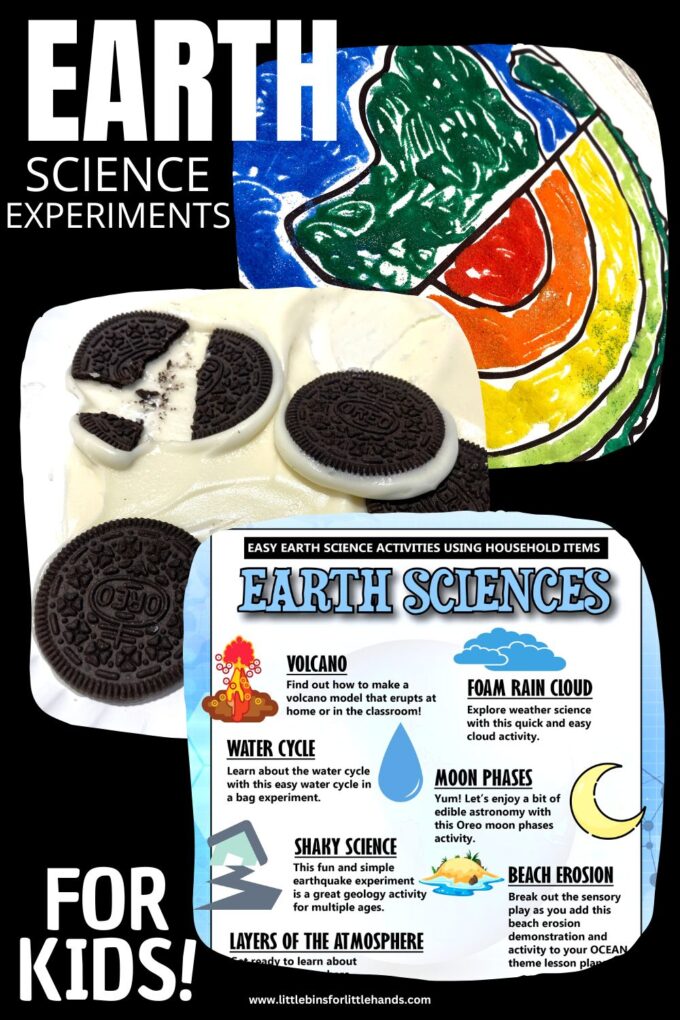Where are you right now? One way to find your location is with longitude and latitude. Be inspired by Arctic explore, Matthew Henson and make your own longitude and latitude map of the world. Represent the lines of latitude and longitude around the Earth with a few simple craft supplies. We love do-able and simple earth science activities for kids!

What Is Latitude And Longitude?
Latitude and longitude are a way to locate a place on Earth. Longitude tell us how far east or west a place is from the Prime Meridian.
The Prime Meridian is a line of longitude that passes through the Royal Observatory in Greenwich, England and is used as a starting point for measuring longitude.
At the top of the earth where the lines all meet is the ‘North Pole’ and at the bottom of the Earth is the ‘South Pole’.
Latitude tells us how far north or south a place is from the equator. The equator is a circle that is halfway between the North Pole and the South Pole, and divides the Earth into the northern hemisphere and the southern hemisphere. It is used as the starting point for measuring latitude.
Who Is Matthew Henson?
Matthew Henson was an African American explorer who accompanied Robert Peary on seven voyages to the Arctic over a period of nearly 23 years. They spent a total of 18 years together on expeditions.
When Henson was about 13 he left home and went to work on a sailing ship. In 1887 Henson became an assistant to Robert Peary, a young naval officer who had already made one trip to the Arctic.
Henson reached the North Pole as a member of Peary’s expedition to the Arctic in 1909. He didn’t receive credit for his achievements because of racial prejudice towards African Americans. Later in Henson’s life he did gain some recognition.
STEM For Kids
So you might ask, what does STEM actually stand for? STEM stands for science, technology, engineering, and math. The most important thing you can take away from this, is that STEM is for everyone!
Yes, kids of all ages can work on STEM projects and enjoy STEM lessons. STEM activities are great for group work, too! You can read more about the valuable life lessons that STEM can provide kids here.
STEM is everywhere! Just look around. The simple fact that STEM surrounds us is why it’s so important for kids to be a part of, to use, and to understand STEM.
From the buildings you see in town, the bridges that connect places, the computers we use, the software programs that go with them, and to the air we breathe, STEM is what makes it all possible.
Interested in STEM plus ART? Check out all our STEAM Activities!
Engineering is an important part of STEM. What is engineering in kindergarten and elementary? Well, it’s putting together simple structures and other items and learning about the science behind them in the process. Essentially, it’s a whole lot of doing!
Helpful STEM Resources To Get You Started
Here are a few resources to help you introduce STEM more effectively to your kiddos or students and feel confident when presenting materials. You’ll find helpful free printables throughout.
- Engineering Design Process Explained
- Real World STEM
- What Is An Engineer
- Engineering Words
- Questions for Reflection (get them talking about it!)
- BEST STEM Books for Kids
- 14 Engineering Books for Kids
- Jr. Engineer Challenge Calendar (Free)
- Must Have STEM Supplies List
Get Your FREE Printable Longitude and Latitude Project!
Longitude and Latitude Activity
Supplies:
- Template
- Paper plate
- String
- Tape
- Glue
- Scissors
Instructions:
STEP 1: Print out the earth template. Cut out.
STEP 2: Glue or tape the earth to the back of the paper plate.
STEP 3: Tape a string to the back of your plate and extend it around the line marked ‘equator.’

STEP 4: Repeat for the line marked ‘prime meridian.’

STEP 5: Now glue strings along each latitude and longitude lines, fastening the latitude lines on the back of the plate, and gathering the longitude strings at the top and bottom of the paper plate and glue.

STEP 6: Add the ‘north pole’ and ‘south pole’ labels to the top and bottom of your earth.

More Fun Earth Science Activities
When you finish this longitude and latitude activity, why not explore more earth science with one of these ideas below. You can find all our earth science activities for kids here!
Make a map of the ocean floor.
Explore the United States with geography scavenger hunts.
Explore the layers of soil with simple LEGO bricks or make an edible soil layers model.
Explore soil erosion for kids.
Learn all about volcanos with these volcano facts and even make your own volcano.
Make this fun plate tectonic model.









